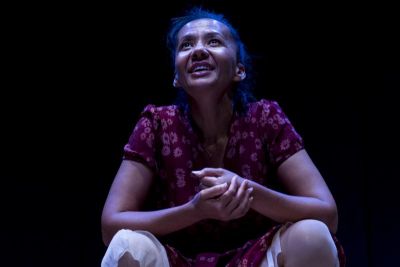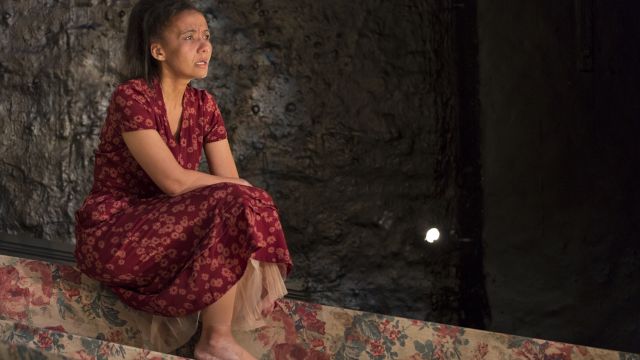The Bleeding Tree
The play opens with a loud, long, resonant gunshot in complete darkness, so without warning that the chattering audience was jolted into silence. The lights rise so slowly that at first they are overpowered by the exit signs. Your eyes gradually adjust before being able to make out anything at all. Over a few minutes during the opening dialogue, three faces resolve out of the gloom: a mother and two daughters. A vicious man arrives home drunk, ready to abuse his family. There’s a confrontation, and just like that, he’s dead.
Described in the marketing material as “equal parts murder ballad and revenge thriller”, The Bleeding Tree fits into the evolving tradition of the Australian bush gothic. The genre arose from European people’s cultural dissonance with Australia’s landscape which they recognised as beautiful but deadly – think Henry Lawson and Patrick White, and Joan Lindsay’s Picnic at Hanging Rock. Through the 20th Century the gothic morphed from bush settings into remote rural towns, such as the setting of the movie Wake in Fright. Most memorably it has been subverted by Indigenous creators such as directors Ivan Senn and Wayne Blair and the photography of Tracey Moffatt—the dangers are not of the landscape now, but with the cruelty and lawlessness in settled areas. The aesthetic is mesmerising and magical realist, at first unsettling tipping into overt horror. All of these elements can be seen in The Bleeding Tree. Cerini’s town is a place where human laws are less powerful than nature, dust returns to dust.
 Director Lee Lewis has chosen an intense, minimalist setting, which foregrounds the actors’ delivery and the language itself. Writer Angus Cerini paints visceral images with his words, and I mean that both figuratively and literally: at various points there are viscera everywhere. Some audience members may these gruesome descriptions traumatic. The language itself is stunningly beautiful, a staccato poetry redolent with Australian phrases and sensibilities. The actors are bewitching: the mood is adrenaline-soaked, confused emotion. Panic overlays relief. Horror pairs with wonder. Terror with glee. Curiousity and madness. So much of this is carried in the actors’ presentation. Paula Arundell has such an exquisitely expressive face, you can almost see the character thinking. Without ever stating their ages, Sophie Ross’s character has the concrete practicality of a child not yet in her teens and Brenna Harding is younger again, her words repetitive and innocent, yet knowing far more than a child her age should know.
Director Lee Lewis has chosen an intense, minimalist setting, which foregrounds the actors’ delivery and the language itself. Writer Angus Cerini paints visceral images with his words, and I mean that both figuratively and literally: at various points there are viscera everywhere. Some audience members may these gruesome descriptions traumatic. The language itself is stunningly beautiful, a staccato poetry redolent with Australian phrases and sensibilities. The actors are bewitching: the mood is adrenaline-soaked, confused emotion. Panic overlays relief. Horror pairs with wonder. Terror with glee. Curiousity and madness. So much of this is carried in the actors’ presentation. Paula Arundell has such an exquisitely expressive face, you can almost see the character thinking. Without ever stating their ages, Sophie Ross’s character has the concrete practicality of a child not yet in her teens and Brenna Harding is younger again, her words repetitive and innocent, yet knowing far more than a child her age should know.
This is a powerful, emotional ride. Fair warning though: people with experience of abusive relationships may be triggered. Or they may find it cathartic.
Cathy Bannister
Photographer: Brett Boardman
Subscribe to our E-Newsletter, buy our latest print edition or find a Performing Arts book at Book Nook.

